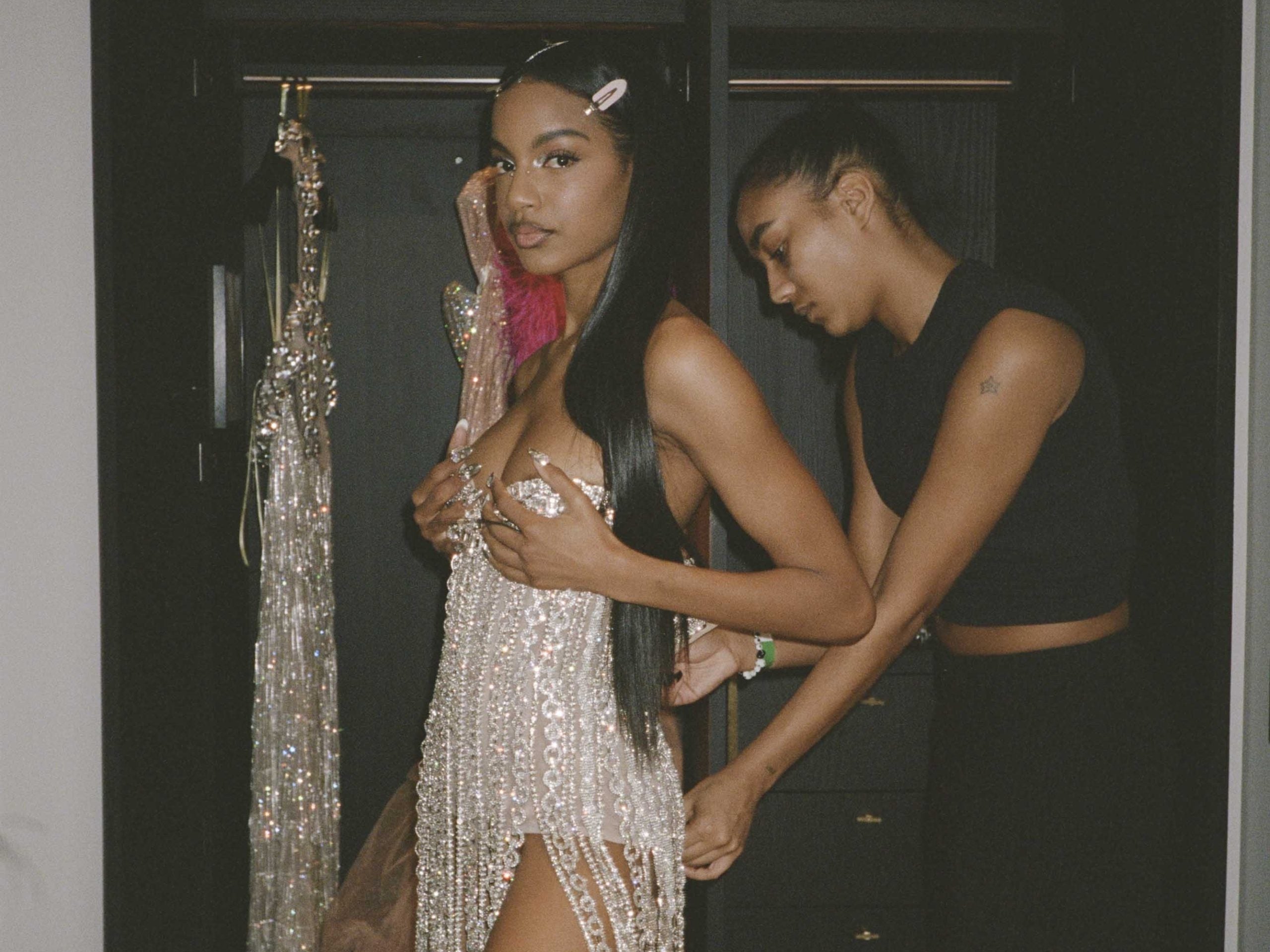FOR BLACK MODELS, THE REAL DRAMA OFTEN UNFOLDS AWAY FROM THE RUNWAY
New York Fashion Week, with its iconic spring and fall showcases, stands as a monumental event in the heart of the Big Apple. Designers, PR professionals, models, and fashion enthusiasts alike converge on Manhattan’s bustling streets, all vying for coveted front-row seats.
While Bryant Park and, since 2010, Lincoln Center have become synonymous with fashion excellence, studios scattered across the island also play a pivotal role in unveiling the upcoming season’s hottest trends.
Amidst the spotlight on creations destined for mood boards, red carpets, and future editorials, a bustling world operates behind the scenes.
The true playground resides backstage, where chaotic makeup stations, production teams frantically adjusting last-minute fittings, and relentless blow dryers create a whirlwind of activity. As captivating as this may seem, the reality presents unique challenges for Black individuals working on set.
In October 2021, British supermodel Leomie Anderson, known for representing renowned brands such as Oscar de la Renta and Tom Ford, used TikTok as a platform to shed light on her disheartening runway experience.
In the social video, she makes an explicit request for a makeup artist versed in melanated skin—only to be assigned someone unused to working with her complexion tones. Additional clips show three non-Black stylists tugging and damaging her hair at the last minute, after she had neglected getting prepared.
Although fashion may serve as an escape for many, this happens all too frequently to Black models, and it begs the question: What’s going on backstage? White models might be able to go through hair and makeup without frustration or an eyebrow raise, but Black models like Ebonee Davis know they need to request an advance rundown of a look and inquire about what products will be used. “I don’t wait until things are too far gone to speak up,” Davis stated back in February, as she was getting ready for the Bronx and Banco show. “I take preventative measures to ensure we are all on the same page. That way, it’s less traumatic for all parties involved.”

Photo Credit: Kadar Small
Traumatic. It’s not an overstatement but an accurate description of the experience of Black models as they seek to build their résumés or their Rolodex. Professional makeup artist (and founder of the eponymous cosmetic line) Danessa Myricks has observed first-hand the harrowing situations Black models can encounter.
“It’s no secret that in backstage bathrooms you’ll often find models crying—using wet tissues to try to erase or improve makeup applications that didn’t match their skin tones or that gave them an ashy finish,” she says. “So many models have experienced this, and they often pull out their own makeup bags to circumvent disasters. It’s unfortunate but true, and my heart goes out to them.”
Up until the Pyer Moss Couture Show in July 2021, legacy makeup artist Mali Magic had avoided working fashion week during her decade-long career. “Often, Black artists would do the heavy lifting behind the scenes—yet the credit and recognition would predominantly go to their White counterparts,” Magic explains, even as she acknowledges the need for expertise such as her own.
“The presence of Black artists backstage could be counted on one hand. And let’s not forget the magnitude of these shows. Just imagine stepping out in front of the entire world with a foundation shade that is completely off and having your hair texture neglected—all while adorned in a garment that cost thousands of dollars.”
Some designers are doing what they can to minimize the behind-the-scenes drama for Black models. While she’s not new to runways and bustling backstages—having walked the Baby Phat catwalk alongside her mom, supermodel Kimora Lee Simmons, during the early aughts—Gen Z model Aoki Lee Simmons has had a smooth ride so far.
The younger Simmons first gig, as an 18-year-old, was walking the primary blue runway of the Pyer Moss couture show, which Simmons described as a “pro-Black environment.” She highlights the open relationship between models and hairstylists; and the use of products and heat protectants that would prevent damage to her thick curls.
Now 21, she recalls a more recent experience while modeling for Tommy Hilfiger, who offered her authority over her hair and makeup. It’s a level of autonomy regarding their look that all Black models should have but very few are granted. “It’s so much better to be in a respectful environment, rather than sitting down, not feeling comfortable, and being like, please don’t touch me,” Simmons says.
For Black models to feel valued as they take on next year’s defining collections, it’s going to take more than just hiring Black hairstylists and makeup artists. All artists and stylists need to be educated on textured hair and darker skin tones. And while some progress is being made, the industry needs to step up and create a respectful, protected backstage environment for Black models, stylists and artists—at NY Fashion Week and beyond.
SOURCE: essence.com


